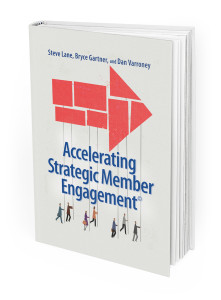 3 Goals Transform an Association Business Model. It’s never easy to embrace the hardships of a historic recession or its aftermath. However Tom Dobbins, President at Arlington, Virginia based American Composite Manufactures Association (http://www.acmanet.org/) (ACMA) seized a key moment in time. Dobbins and his team succeeded in closely aligning their organization with its small and large composite manufacturers, suppliers and distributors. Three year overall 9% revenue growth and 10% annual conference growth after suffering through the downturn signals the Association is on track.
3 Goals Transform an Association Business Model. It’s never easy to embrace the hardships of a historic recession or its aftermath. However Tom Dobbins, President at Arlington, Virginia based American Composite Manufactures Association (http://www.acmanet.org/) (ACMA) seized a key moment in time. Dobbins and his team succeeded in closely aligning their organization with its small and large composite manufacturers, suppliers and distributors. Three year overall 9% revenue growth and 10% annual conference growth after suffering through the downturn signals the Association is on track.
ACMA Embraces Core Focus
Reinforcing a widely accepted approach among growth minded CEO’s, ACMA reformulated its Mission Statement reinforcing its commitment to their manufacturer and supplier member base. Moving forward the Association would provide direct ROI for dues dollars invested:
- Relevant education and information.
- Expertise and representation in legislative and regulatory affairs.
- Market growth and development.
3 Goals Transform an Association Business Model
Associations like ACMA narrow their focus reflecting clear cut deliverables for dues payers. The Board of Directors renewed its commitment to support their members in all 50 states:
- Provide resources for managing and growing businesses that are utilized by a significant number of the membership.
- Provide resources that a significant number of the membership find useful in educating and training their employees.
- Develop multiple communication channels to disseminate information to the greatest number of member companies and other stakeholders.
Upping Their Game
Increasing their Advocacy efforts through a Federal Agency Forum, launching a new online learning platform and in October 2014, the launch of CAMX produced by ACMA and SAMPE. This event will provide educational programs and networking opportunities for sharing product innovations and establishing key industry contacts.
3 Goals Transform an Association Business Model
Dashboards reflecting data and metrics keep Tom Dobbins and his team focused and executing the 3 key goals that helped realign ACMA and transform its business model (http://bit.ly/13zCQkw).
For a free copy of the “Accelerating Strategic Member Engagement” eBook, request your copy at www.potomaccore.com.



